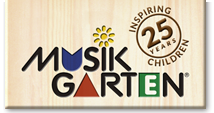Maria Montessori, the acclaimed Italian physician and educator best known for the pedagogical philosophy that bears her name, once wrote “follow the child.” The statement is acknowledgement that children have their own particular pattern, of which careful observation is key to understanding in the classroom. Many childhood music programs approach and develop their curricula based on this philosophy. But the story, however, of each child begins even before the classroom – with the family in the home. At birth, babies are immediately exposed to a world of senses, each of which influences their process of self-construction. The environment in which they are submerged has a fundamental effect on the rest of the child’s life. Over the next several posts, we will explore how those early years are so formative, what influences that growth, and how the role of parents and caregivers is so important.
Phases of Childhood Development
Throughout time, psychologists and academics have sought to divide childhood development into phases, stages, or periods. Whether it is Piaget’s 4 stages of Cognitive Development, Erikson’s Stages of Psychosocial Development, or Montessori’s Sensitive Periods of Development, each differs slightly from each other, either in behavioral approach or developmental milestones. But all of these agree that the most formative stages occur in the earliest part of life. While there is slight variation in the exact milestones, for discussion we can identify two major phases in childhood development:
Phase 1 – From birth to age three are years of intense activity and absorption.
Phase 2 – From age three to six years is a time to consolidate the gains from the first period
Whether cognitive or social, there is no more significant phase in human development than these early years, and even more influence is placed on the first three years of life.
A Child’s First Three Years are Critical
An incredibly complex stage of development takes place during the first three years of life, as a child becomes consciousness of being separate from others and builds competencies off of stimulating experiences. In the creative process from newborn to three-year-old, a series of transformations take the child from helpless infant to becoming a confident person in his or her own right. During this time they experience a growing sense of selfhood with an ability, through language as well as mobility, to communicate their individual needs and desires.
This formation is possible at a pre-conscious level because nature directs the development in the earliest stages of childhood. These are “critical” periods, where the developing child focuses on the necessary factors in their environment that direct the work of inner construction. The first three years of human life are so critical because it is a period in which intellectual growth rapidly occurs and cognitive functions are being established. Therefore, early experiences within an interesting and stimulating environment promote optimal development physically, emotionally, socially, spiritually and intellectually.
The Senses are the Child’s Window to the World
Even before they are born, babies have some senses in the womb. They can hear their mothers voice and music being played, they can also sense vibration when their mother rubs her belly, and often engage in self-touch as their skin gradually becomes more sensitive to stimulation. At birth, they begin to absorb their surroundings with enthusiasm during every waking moment. Through exploration and manipulation, sensory information (taste, smell, touch, vision, and hearing) is confirmed though movement. This sensorimotor exploration is a way for babies to learn without language and begin to develop the symbolic system that is the basis of concept formation and cognitive learning. In just three years, babies have organized what their senses have taught them in ways that encapsulate their own understanding.
The process by which infants and toddlers learn is based on an important and impressionable phase during the first three years of life. It is during this formative period that the child organizes information that has been gathered through their senses to begin to establish selfhood and identity. During this time and the next three years of life, several factors determine how the child will learn and grow physically, emotionally, socially, spiritually and intellectually. Continuing to explore the Nature of the Child, our next post will expand on the important factors that influence these critical formative years.
Much of the content for this post was based on the introduction to Family Music for Babies and Family Music for Toddlers, an early childhood music curriculum developed by Musikgarten.





